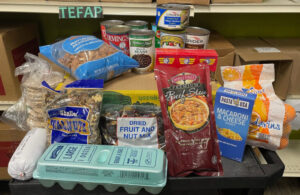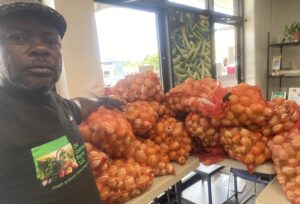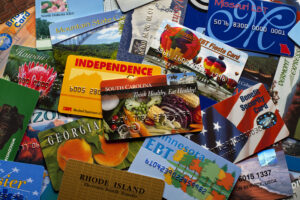The coronavirus crisis has put added pressure on SNAP, but there is some good news: greater attention is being paid to the need to make it easier for people to apply for and receive the benefit.
The notoriously difficult process of applying for SNAP — involving pages of documentation and even face-to-face interviews — is finally entering a more modern age, as mobile applications optimized for ease of use start to become more widely available. For example, GetCalFresh, a mobile app developed by the non-profit Code for America, makes it possible to submit an application for California’s version of SNAP in a matter of minutes.
In the face of crushing demand, improvements to the SNAP application process cannot come quickly enough. GetCalFresh processed 115,000 applications in March, compared to only 40,000 in February. “What this moment is showing us is there’s a really urgent need for services that help people” that are accessible anytime, anywhere, said Caitlin Docker, Associate Program Director for GetCalFresh.
Even Congress is aware that current barriers to applying for benefits need to be smoothed. Earlier this month, Senator Kirsten Gillibrand and Congressman Joe Morelle, both of New York, called for legislation that would “modernize and streamline” access to benefits including SNAP, specifically mentioning the need for eligible recipients to be able to apply “through the phone in their hands.”
While online websites are available to print out SNAP applications or even submit them online, these web-based services can be cumbersome, taking up to an hour to complete. And they often don’t work on mobile devices, which is problematic given that most low-income people rely on smartphones to access the internet.
Food assistance programs and others are heeding the call for a more efficient way to apply for and manage SNAP with mobile apps.
Software company Propel’s Fresh EBT app helps individuals find out about SNAP, and also perform a variety of other functions from their mobile device, said Founder and CEO Jimmy Chen. The app acts as an intermediary to each state’s SNAP portal, while also letting users check their SNAP balance, clip coupons, set a weekly budget and even apply for jobs.
“We are a way to help stretch your SNAP benefits,’’ he said.
Launched in 2016, Fresh EBT is used by more than three million households each month, Chen said. People like using it because it is “more visual,” Chen said, adding that users have clipped about $30 million worth of coupons. Fresh EBT also makes it easier to find information.
Since the pandemic began, Fresh EBT has gained one million new users. On any given month, about 20% of users who register for Fresh EBT say it’s their first time on SNAP. “But in the last two months it’s now at 30%,” Chen said.
In California, Code for America’s GetCalFresh app lets users apply for SNAP in less than 15 minutes, according to Docker. The streamlined process is the result of a lot of research and development by Code for America, which has worked since 2009 to improve the technology underlying government services.
While researching the best way to help people access SNAP, Code for America uncovered a misperception that porting a website onto a mobile platform is adequate, when in fact, it is often hard for people to use, said Eleanor Davis, Senior Program Manager.
“We build all of our websites as mobile first so they’re easy to read and you can access everything,” she said. “Then, when you view a site on a tablet or desktop, the screen adjusts so it’s responsive to all size screens. We think that’s the best practice for building websites.”
The mobile-responsive GetCalFresh app supports people through every step of the SNAP application process. “As applicants use it, we calculate issues they face and work to remove barriers,” Docker said. “We really work to make sure we’re breaking down hard eligibility questions,’’ such as what a person’s gross and net income are. This increases the approval rate, she said.
In addition to wider availability of technology, states are benefitting from greater flexibilities in administering SNAP. New options, for example, allow states to temporarily waive requirements for in-person interviews.
Such accommodations are urgently needed, given the volume of applications. “On March 15 we came into the office and saw our live chat feature [on GetCalFresh] had almost 10 times the number of users,’’ Docker recalled, adding that that was the day six Bay Area counties began sheltering in place. “I would say we were managing about 1,000 questions a day.’’ — Esther Shein
Esther Shein is a longtime freelance writer and editor whose work has appeared in several online and print publications. Previously, she was the editor-in-chief of Datamation, a managing editor at BYTE, and a senior writer at eWeek (formerly PC Week).









